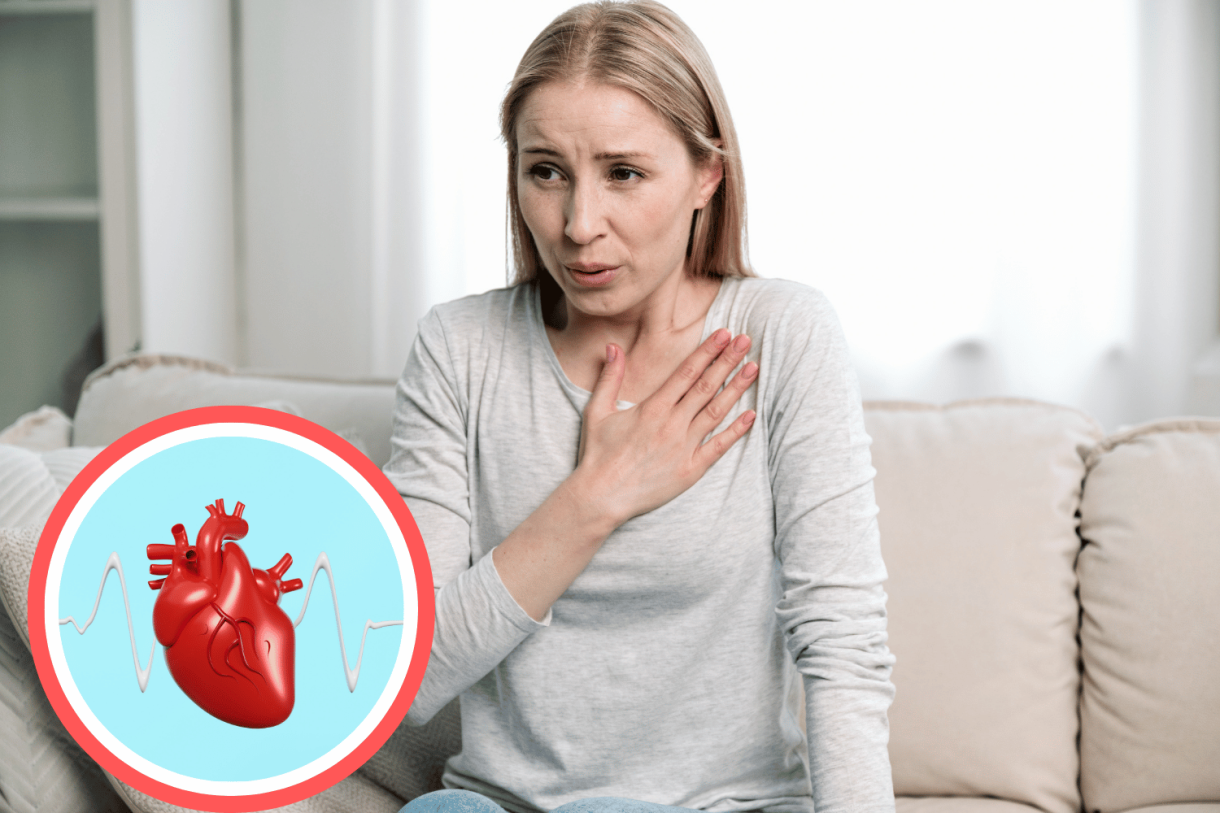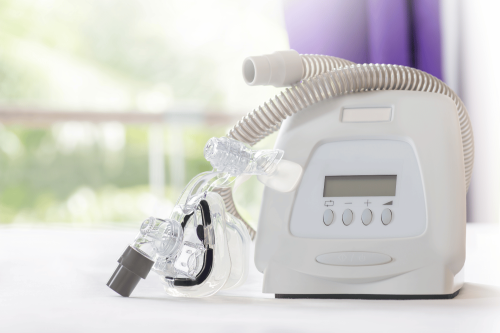
Tachycardia is a condition where the heart beats faster than usual, often exceeding 100 beats per minute. While a rapid heartbeat can be a normal response to exercise or stress, tachycardia that occurs at rest or without a clear cause can signal an underlying health issue. Studies show that tachycardia can significantly impact quality of life and, in some cases, lead to serious complications if left untreated.
Understanding the symptoms, causes, and treatment options for tachycardia is essential for early recognition and effective management. In this blog, we’ll explore everything you need to know about tachycardia, from identifying its signs to the latest treatment approaches. Let’s dive in and learn how to keep your heart health on track!
What is Tachycardia?
Tachycardia is a medical condition characterized by an abnormally fast heart rate, with or without associated symptoms. It should be differentiated from physiological tachycardia, which is a normal increase in heart rate during activities such as exercise or stress.
In tachycardia, the heart rate generally rises above 100 beats per minute while at rest, although this can vary. The primary concern is pathological tachycardia, where a fast heart rate occurs without a clear cause. These symptoms occur because a rapid heart rate may not allow the heart's chambers to fill adequately, reducing the amount of oxygen-rich blood pumped to the body.
The Electrical System of the Heart and Tachycardia
Tachycardia can be explained by understanding how the heart’s electrical system works. This electrical system guides the heartbeat and its rhythm. Disruptions in this system can cause the heart to beat too quickly.
The normal pacemaker of the heart is the sinoatrial node (SA node), located in the right atrium. This electrical signal then spreads through the heart, stimulating ventricular contraction and pumping blood. In a normal individual, this occurs at a resting rate of roughly 60 to 100 beats per minute. The heart rate can increase with exercise or stress.
In tachycardia, this electrical system doesn’t work normally. The problem could be faulty electrical signals that speed up the heart rate. Common types include Atrial Fibrillation, in which the atria beat irregularly and rapidly; Supraventricular Tachycardia (SVT), a fast heartbeat originating above the ventricles; and Ventricular Tachycardia, a rapid rate originating in the ventricles that can be life-threatening.
Recognizing the Signs and Symptoms of Tachycardia
Some people with a fast heart rate are asymptomatic, but patients who present with tachycardia can have many bothersome symptoms. The frequency and intensity of tachycardia symptoms tend to vary from one individual to the next. While some patients complain of mild discomfort, the condition may be associated with more serious symptoms in others, which affect their quality of life. The symptoms can vary depending on the type and severity of tachycardia. Some of the common signs and symptoms of tachycardia are discussed as follows:
- Palpitations or a Racing Heartbeat: A fluttering, pounding, or racing sensation in the chest is a hallmark symptom of tachycardia. This happens because the heart is beating much faster than normal.
- Dizziness or Lightheadedness: When the heart beats too fast, it may not effectively pump blood to the brain. This can cause dizziness or lightheadedness. In extreme cases, this may lead to fainting, also known as syncope.
- Shortness of Breath: Individuals with tachycardia may have difficulty breathing because the rapid heartbeat cannot efficiently deliver oxygen to the body’s tissues, especially during physical activity.
- Chest Pain or Discomfort: A rapid heart rate can cause chest pain or discomfort, similar to angina. This pain can occur because the heart muscle isn't getting enough oxygen-rich blood.
- Fatigue or Weakness: This is associated with reduced blood flow to the body, which might cause unusual tiredness, a general lack of energy, or weakness, even with minimal physical exertion.
- Fainting (Syncope): In severe cases of tachycardia, the drop in blood pressure and reduced blood flow to the brain can be significant enough to cause a person to lose consciousness.
Causes of Tachycardia
The causes of tachycardia can be divided into two broad categories: those directly related to the heart and those from other external factors or conditions affecting the body. Let us now examine the details of these causes.
Heart-Related and Non-Heart-Related Causes
Tachycardia often results from conditions that damage heart tissue or interfere with the heart's electrical system. Heart-related causes include coronary artery disease, heart failure, or heart valve disorders, which can weaken the heart muscle and lead to abnormal rhythms. Patients dealing with non-heart-related issues like high fever, stress, or anxiety are also prone to a faster heart rate. Moreover, some substances, particularly stimulants like caffeine or nicotine, can trigger tachycardia. In addition, abnormal amounts of electrolytes, such as potassium or calcium, in the blood can also disrupt the heart’s electrical impulses.
Other Triggers
Other factors can also lead to a rapid heart rate. Anemia, a condition with too few red blood cells, can force the heart to pump faster to deliver oxygen to the body. Hyperthyroidism, an overactive thyroid gland, can also speed up the body's metabolism and heart rate. Various medications, such as certain decongestants or asthma inhalers can cause this condition. Other triggers include heavy alcohol use or illegal drug use, which can directly affect the heart's electrical system. The severity and impact of these triggers can vary, potentially leading to a dangerously fast heartbeat and compromised cardiac function.
Diagnosis of Tachycardia
Tachycardia is diagnosed by precise determination of the condition and its underlying cause. It involves an appropriate integration of history, physical examination, and confirmatory diagnostic studies. Let’s consider some standard methods of diagnosis available for this condition:
- Medical history: The health professional will ask about symptoms of tachycardia —when they occur and what triggers them —as well as current medical problems, medications, and any family history of heart problems.
- Physical examination: Includes checking the pulse and heart rate, listening to the heartbeat with a stethoscope to check for irregular rhythms, and measuring blood pressure.
- Electrocardiogram (ECG): The primary test for diagnosing tachycardia. An electrocardiogram records the heart’s electrical signals and can quickly detect if the heart is beating too fast or has an abnormal rhythm.
- Holter monitor: A portable ECG device that continuously monitors the heart for 24 to 48 hours. It helps detect intermittent tachycardia throughout the day.
- Event recorder: Similar to a Holter monitor, but can be worn for up to 30 days. The patient activates it when symptoms of a fast heartbeat occur.
- Echocardiogram: An ultrasound test that produces an image of the heart's structure and function. It helps to identify underlying structural heart diseases that could cause tachycardia.
- Stress test: Measures the heart's activity during physical exertion, such as walking on a treadmill. Tachycardia may only become apparent under these stressful conditions.
- Electrophysiology study: An invasive test that may be needed in some cases. It involves threading catheters into the heart to map its electrical pathways and identify the source of the arrhythmia.
- Blood tests: These tests may be ordered to check for other conditions that could be contributing to tachycardia, such as thyroid disorders, anemia, or electrolyte imbalances.
Treatment Options for Tachycardia
Tachycardia treatment depends on its underlying cause and severity, ranging from simple lifestyle changes and maneuvers to medications and more invasive procedures. The management strategy depends on the type of tachycardia, the frequency of symptoms, and the patient’s overall health status.
Vagal Maneuvers and Lifestyle Modifications
In some cases, simple actions can stop an episode of tachycardia.
- Vagal Maneuvers: For certain types of tachycardia, actions such as bearing down (as if having a bowel movement), coughing, or applying a cold, damp towel to your face can help slow the heart rate by stimulating the vagus nerve.
- Lifestyle Changes: Avoiding known triggers like caffeine, nicotine, and alcohol is crucial. Managing stress through techniques like yoga or meditation can also help prevent episodes.
- Heart-Healthy Diet: Adopting a diet low in saturated fats and sodium can support overall cardiovascular health and help manage tachycardia.
Tachycardia Medications
Several medications can be used to control a fast heart rate or restore a normal rhythm.
- Beta-blockers and Calcium Channel Blockers: These drugs work by slowing the heart rate and are often used for long-term management.
- Antiarrhythmic Drugs: These medications work directly on the heart's electrical signals to restore a normal rhythm. They are used for both immediate control and long-term prevention.
- Emergency Medications: In an emergency setting, fast-acting intravenous medications can be given to slow the heart down quickly. These are not suitable for all patients and are used for specific, acute situations.
Procedures and Implantable Devices
For persistent or life-threatening tachycardia, more advanced treatments are necessary to restore and maintain a normal heart rhythm. A cardiologist will recommend the best approach based on the specific condition.
- Cardioversion: This procedure can be done with medications or with an electrical shock delivered to the chest. It's used to "reset" the heart's rhythm, especially in emergencies.
- Catheter Ablation: This is an invasive procedure in which thin, flexible tubes are guided to the heart to locate and destroy the small area of heart tissue causing the abnormal electrical signals. It is highly effective for many types of tachycardia.
- Implantable Devices: An implantable cardioverter-defibrillator (ICD) is a device placed under the skin that monitors the heart rhythm. If a dangerous tachycardia is detected, it delivers an electrical shock to restore a normal rhythm. In some cases, a pacemaker may also be used.
- Follow-up Care: After any procedure, regular follow-up with a healthcare professional is necessary to monitor heart health and ensure the treatment remains effective.
Tachycardia management usually requires close collaboration with healthcare professionals to devise an appropriate treatment plan. In that respect, follow-up and monitoring are essential because the selected treatment may need adjustment over time.
Staying Ahead of Tachycardia Risks!
Tachycardia has complex features that could considerably affect a person’s quality of life. With early diagnosis, appropriate treatment, and effective management, patients can lead full and active lives.
Again, the most important thing with tachycardia is to work with your healthcare team to develop a treatment plan that best fits your needs. There are different ways to manage the condition, including medications, procedures, or lifestyle changes. Additionally, bystanders should be prepared to handle emergencies related to severe tachycardia by being CPR- and first-aid certified.
Anybody suspecting symptoms associated with tachycardia should not hesitate to consult a doctor. The earlier the diagnosis and treatment, the better the results in managing this condition and improving one’s life.








 Login with Google
Login with Google Login with Facebook
Login with Facebook